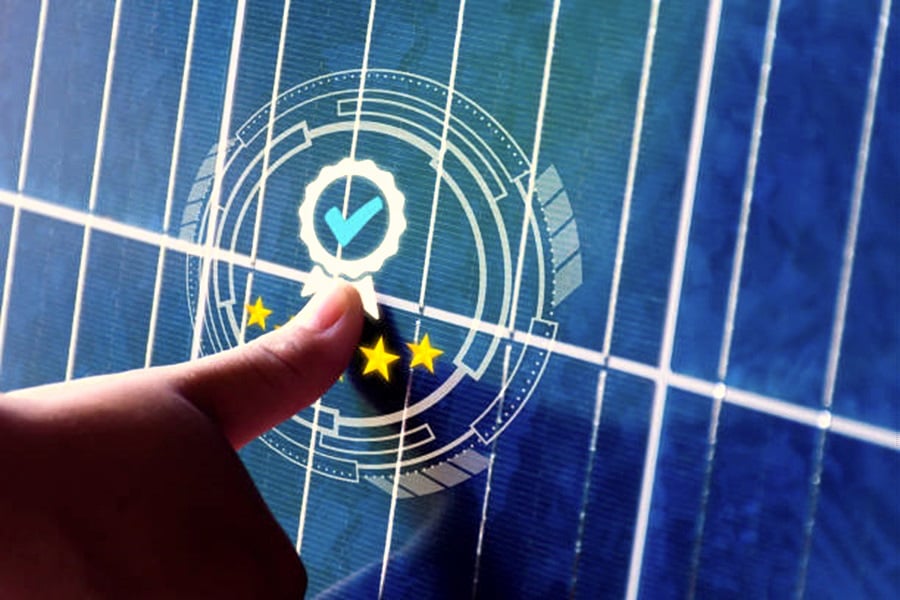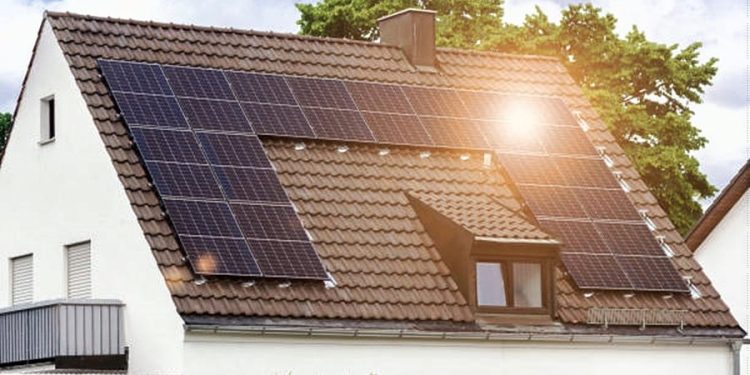Congratulations on taking the green leap and installing solar panels in your home or business! You’ve taken a significant step towards energy independence and environmental sustainability by installing solar panels. But with your shiny new panels gleaming on your roof, you might wonder: what comes next?
Fear not, solar mate, this comprehensive guide will equip you with the knowledge to navigate your post-installation journey with ease, including solar inspection after installation and addressing the common question, “I have solar panels now what?”
Ready to upgrade your solar system and take your energy savings to the next level? Embrace the energy efficiency revolution by upgrading your solar panels, battery or solar inverters with Energy Matters.
Solar inspection after installation
A solar inspection after installation is crucial to ensure everything is in shape. Within 12 months of switching on, the Clean Energy Regulator (CER) might invite you to participate in their free inspection program. This is a fantastic opportunity to have a qualified professional scrutinise your system for safety, compliance, and optimal performance. You can also request an independent inspection for peace of mind.
Generally speaking, the solar inspection procedure includes inspecting the following factors, though it may differ based on the size and type of your system.
- The quality and safety of the wiring, connections, and grounding
- The placement and visibility of the labels, signs, and switches
- The functionality and compatibility of the inverter, meter, and other components
- The compliance with the approved design and permit
If your system passes the inspection, you will receive a certificate of completion or approval, allowing you to connect your system to the grid and generate electricity. If your system fails the inspection, you must fix the issues and schedule a re-inspection before proceeding.

After solar panel installation
Once your system is inspected and approved, you can turn it on and enjoy the benefits of solar power. However, you still need to do some things after solar panel installation to make the most of your investment. These include:
Registering your system and claiming your incentives
After installing solar panels, you must register your system with the Australian Small-scale Renewable Energy Scheme (SRES) administrator, the Clean Energy Regulator (CER). Through the issuance of small-scale technology certificates (STCs), the SRES offers financial incentives for installing qualifying small-scale renewable energy systems, such as solar panels. To recover some initial installation costs, you might sell the STCs you receive for your system.
For you to register your system and obtain STCs, you must give the CER the following details:
- The details of your system, such as the capacity, location, and installation date
- The details of your installer, such as their name, accreditation number, and signature
- The proof of purchase and ownership, such as the invoice and receipt
- The serial numbers of the panels and inverter
You can register your system and claim STC online through the REC Registry or an agent, such as your installer or a retailer. You should do this as soon as possible after solar installation, as the value of STCs may change over time.
It is important to note that this step is only applicable if you choose to sell the STCs yourself. Most home and business owners opt for an upfront discount on their system and sign the STCs over to their installer.
Read more about:
Monitoring your system performance and energy usage
After solar panel installation, you should regularly monitor your system performance and energy usage to ensure your system works properly and efficiently. This can help you identify and resolve issues, optimise energy consumption, and maximise savings and returns.
There are different ways to monitor your system performance and energy usage, such as:
- Using the display or app of your inverter, meter, or other device
- Using a third-party monitoring service or software
- Using the data and reports from your electricity retailer or distributor
Maintaining your system and keeping it clean
After solar panel installation, you should maintain and keep your system clean to ensure its longevity and efficiency. Solar panels are generally low-maintenance but may accumulate dust, dirt, bird droppings, leaves, or other debris over time, reducing their output and performance. Therefore, you should inspect your panels regularly and clean them when necessary.
The frequency and method of cleaning your panels depend on several factors, such as the location, climate, tilt, and type of your system.
Read more about:

Apart from cleaning your panels, you should also check the other components of your system, such as the wiring, connections, inverter, meter, and solar battery, for any signs of damage, corrosion, or malfunction. If you notice any problems, you should contact your installer or a qualified electrician to fix them immediately. You should also follow the manufacturer’s recommendations for servicing and replacing your system components when needed.
Reviewing your electricity bill and feed-in tariff
After solar panel installation, you should review your electricity bill and feed-in tariff regularly to understand your energy consumption and generation patterns and ensure you get the best deal for your solar power. Your electricity bill may look different after you install solar panels, as it may include the following charges and credits:
- A fixed daily supply charge for accessing the grid
- A variable usage charge for the electricity you import from the grid
- A feed-in tariff credit for the electricity you export to the grid
- A demand charge for the peak electricity you use or generate at certain times
- A solar metering charge for the installation and maintenance of your meter
Your electricity bill may also show you the breakdown of your energy consumption and generation, such as the amount of electricity you used or generated during different time periods (peak, off-peak, shoulder) or the amount of electricity you imported or exported during different seasons or months.
Your feed-in tariff is the rate you are paid for the excess electricity you generate and export to the grid. The feed-in tariff may vary depending on location, retailer, contract, and system size.
In some states, such as Victoria and South Australia, there is a minimum feed-in tariff set by the government, while in other states, such as New South Wales and Queensland, there is no regulated minimum and you can negotiate with your retailer. The feed-in tariff may also change over time, depending on the market conditions and policy changes.
Read more about:
To make the most of your feed-in tariff, compare the offers from different retailers and choose the one that suits your energy needs and preferences. You should also review your feed-in tariff regularly and switch to a better deal if possible. You can use Energy Matters’ “Free Energy Bill Comparator” to compare your area’s feed-in tariffs and electricity plans.
Sources: Electrical Safety Office (ESO) Queensland Government, Go Green Solar, SAE Group, Treehugger, solar.com, CNET, CER
Remember… investing in solar is investing in your future
Don’t hesitate to contact your solar installer with any questions or concerns. They’re your solar support squad to help you navigate the exciting world of solar ownership. Remember, a well-maintained system translates to long-term savings and sunshine-powered satisfaction.
Bonus tip: Spread the solar love! Share your positive experience with friends and family. Encouraging others to switch to solar will contribute to a cleaner, greener future for all Australians.
So, there you have it! With some knowledge and these handy tips, you’re well on your way to enjoying the sun-soaked benefits of your solar panel installation. Remember, investing in solar is investing in your future, wallet, and planet. So, bask in the glow of your clean energy independence, and let the sunshine power your Aussie way of life!
Unleash the potential of solar battery storage!
Are you ready to transform the way you power your business or household? Say goodbye to rising electricity costs and unpredictable energy grids. The state-of-the-art solar battery systems empower you to maximise energy efficiency, save money, and reduce your carbon footprint while enjoying an uninterrupted power supply.
Let us discuss and choose the best quote that suits your needs and budget, and we can connect you with our trusted local installers, who will provide up to 3 FREE quotes for your business solar and home battery system.


















